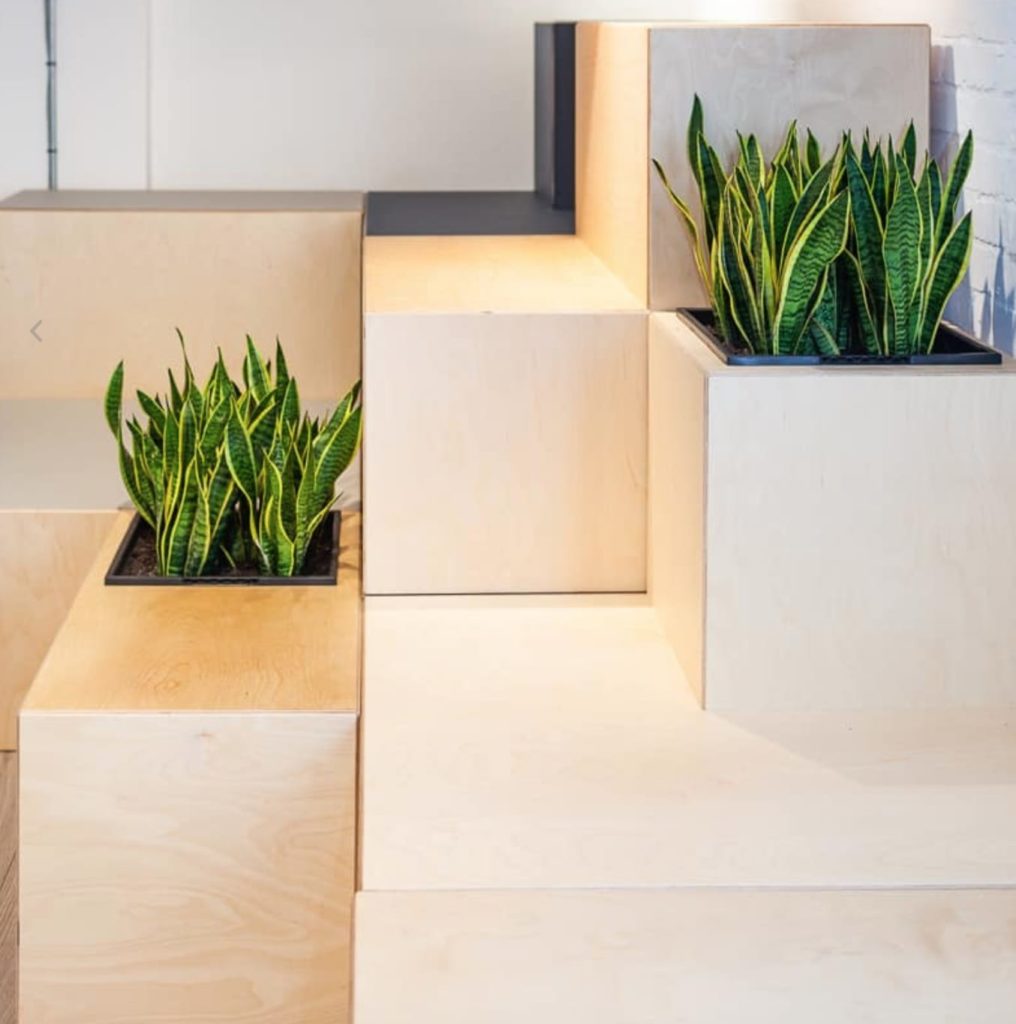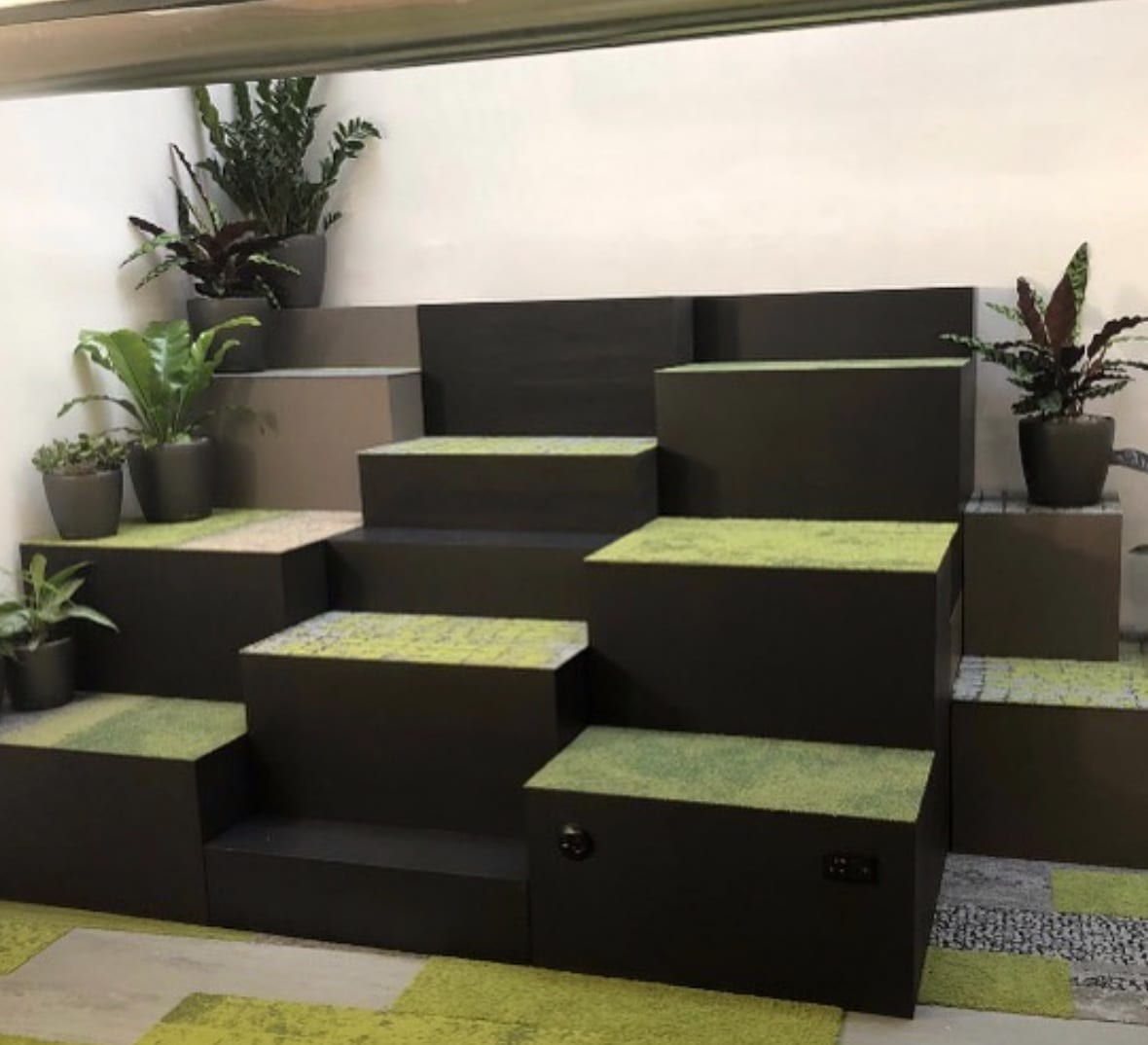The 12 Environmental Features of Biophilic Design
New research supports the measurable and positive impacts of biophilic design – it can reduce stress, enhance creativity and clarity of thought, improve our well-being and expedite healing which is why it is now being prioritised both in design research and practice.
Today productivity costs are 112 times greater than energy costs in the workplace thus incorporating nature into the workplace is no longer considered a luxury for the few, but a sound economic investment.
Researchers and designers alike have been working on this for decades to work out which aspects of nature most impact our innate satisfaction with the built environment.
Stephen Kellert identified more than 70 different mechanisms for creating a biophilic experience; William Browning and Jenifer Seal Cramer further outlined 3 classifications of user experience: nature in the space, natural analogue and nature of the space.
These basic dimensions of biophilic design can be mapped to 6 fundamental biophilic design elements:
- Environmental features
- Natural shapes and forms
- Natural patterns and processes
- Light and space
- Place-based relationships
- Evolved human-nature relationships
Views of what constitutes natural, nature, wild, or beautiful greatly vary however there are 12 relatively well-recognized characteristics of the natural world in the built environment:
- Colour – Colour empowerment has been instrumental in human evolution and survival since time immemorial. It enabled our ancestors to identify danger, locate food, water and other useful resources. When choosing colours, using a colour scheme that represents the local natural environment or brand colours create a sense of belonging through attachment to place.
- Water – The famous architectural critic John Ruskin remarked (Hildebrand 2000, 71)): “As far as I can recollect, without a single exception, every Homeric landscape, intended to be beautiful, is composed of a fowltain, a meadow, and a shady grove.” Roger Ulrich similarly observed (1993) “Water features constantly elicit especially high levels of liking or preference.” A water feature provides visual stimulation and soothing sounds, reminiscent of a calm babbling brook. It can also be used as white by covering the more mundane sounds of office machines, phones ringing, and conversations. Fountains can become a gathering place for employees — especially if placed in a break room — or for visitors to the office if placed in a waiting or reception area. A water feature is not without risk however – n regions with naturally high air humidity, adding more water to the office air may raise interior humidity levels to an uncomfortable and unhealthy level. Consult with heating and air conditioning professionals as well as fountain designers to determine the best water feature for the office environment.
- Air – People often prefer natural ventilation over processed, stagnant air. breathing in dry air can irritate sensitive membranes in the nose and throat, making staff more susceptible to viruses and allergens as well as respiratory ailments, such as asthma. As Philippe Pare, design director at architecture and design consultancy Gensler, says: “Improved air quality has to be up there as one of the biggest benefits of biophilic design as it plays an important role in reducing absenteeism, which is a huge business cost.”
- Sunlight – Our body’s response to daylight is another important clue as to how we can harness the power of biophilia. Daylight affects both our eye functions and inherent circadian rhythms. Morning light is yellow, becoming bluer in mid-day and shifting to red in the late afternoon. Exposure to natural light serves to balance our hormonal levels of serotonin (linked to our mood) and inhibit the production of melatonin (used to regulate sleep). When there is an imbalance of serotonin and melatonin in our bodies, our sleep-wake pattern is disturbed, which inhibits our neurological and immune system functions. Natural daylight is important in providing specific wavelengths of light needed by the human body to establish and maintain the serotonin-melatonin balance.
- Plants – Plants are fundamental to human existence as sources of food and other aspects of sustenance and security. The mere insertion of plants into the built environment can enhance comfort, satisfaction, well-being, and performance. Plants, as living organisms, have a beneficial influence on the climate of the working environment – in particular because they improve air quality. When planted in sufficient quantity, indoor plants have been shown to remove many types of air-borne pollutants from both indoor and outdoor sources (Nieuwenhuis et al., 2014). In offices with plants, staff well-being increases and there is a reduction in sick leave (Bergs, 2002). The ability of plants to absorb carbon dioxide also has beneficial implications for the office as studies have found that student performance declines with increasing CO2 levels (Shaughnessy et al., 2006), as does workplace productivity (Seppänen et al., 2006). Moving away from the physiological, enrichment of the workplace (whether through plants or other means) signals that attempts are being made by management to improve staff well-being (Vischer, 2005). Evidence supporting this idea comes in the form of a study by Dravigne et al. (2008), which showed that people working in offices with plants reported feeling happier in their job and their performance. This is why we have now incorporated plants into our Huddlebox
- Animals – Designing animal life into the built environment can be difficult and problematic, although sometimes effective in aviaries or aquariums. Animals in building interiors typically occur in representational rather than literal form, many through the use of ornament, decoration, art, and in stylized and highly metaphorical disguise. The presence of animal forms, nonetheless, often provokes satisfaction, pleasure, stimulation, and emotional interest. These have been found in the earliest human structures including the Neolithic Göbekli Tepe and the Egyptian sphinx.
- Natural materials – People generally prefer natural over artificial materials – This may be due to the inability of artificial materials to reveal the organic processes of aging, weathering, and other dynamic features of natural materials. Meaningful, direct connections with thesenatural elements, particularly through diversity, movement and multi-sensory interactions has been seen throughout history. European modernists like Wright, used wood grain and the veining of stone as decorative elements, and were equally concerned with exploring the relationship of interior to exterior through the use of natural materials.
- Views and Vistas – People express a strong and consistent preference for exterior views, especially when the vistas contain natural features and vegetation. Vistas to large bodies of water or physical access to natural or designed water feature have also been proven to have the health response so long as they are perceived as ‘clean’ or unpolluted. Integrating views to nature into an office space can save over $2,000 per employee per year in office costs, whereas over $93 million could be saved annually in healthcare costs as a result of providing patients with views to nature.
- Façade greening – Buildings with vegetative such as green roofs or living wall systems (modular pre-vegetated panels), often provoke interest and satisfaction. This likely reflects the historic benefits associated with organic materials as sources of insulation, camouflaging protection, or even food.
- Geology and landscape The compatible connection of buildings to prominent geological features is often an effective design strategy. These structures are sometimes described as rooted or grounded. Frank Lloyd Wright achieved particular success with his Prairie-style architecture in part by creating structures that worked in strong parallel relation to rather than dominating their savanna-type landscape.
- Habitats and ecosystems Buildings and landscapes that possess a close and compatible relationship to local habitats and ecosystems also tend to be highly effective and preferred. Important ecosystems in this regard are often wetlands, forests, grasslands, and watersheds. Outside the office of COOKFOX Architects, sits a 3,000 square foot extensive green roof that changes colour and vibrancy from season to season. Employees often notice changes in bee colony behavior during times of extreme heat and humidity,
- Fire – Fire in the build environment is a complicated and difficult design challenge. The notion of fire within building interiors has long been celebrated as a sign of comfort and civilization, providing pleasing qualities of colour, warmth and movement. The experience of fire can be both a source of comfort and anxiety. The satisfying presence of fire in the built environment may be achieved through the construction of fireplaces and hearths, but also simulated by the creative use of light, color, movement, and materials of varying heat conductance.

Several examples of small investments involving very low or no up-front cost, such as providing employees access to plants, natural views, daylight, and other biophilic design elements. These measures provide very healthy returns.
To find out how biophilic elements of design can be introduced in to your workspace, get in touch with Workagile or pop in to the London showroom on 16-26 Banner Street, Clerkenwell.
If you enjoyed this article you may enjoy:
What is the next big step in workplace design
How salutogenic design will change people’s lives
benefits of biophilic design in the workplace
12 elements of a thriving workplace.
The global impact of biophilic design on the workplace

